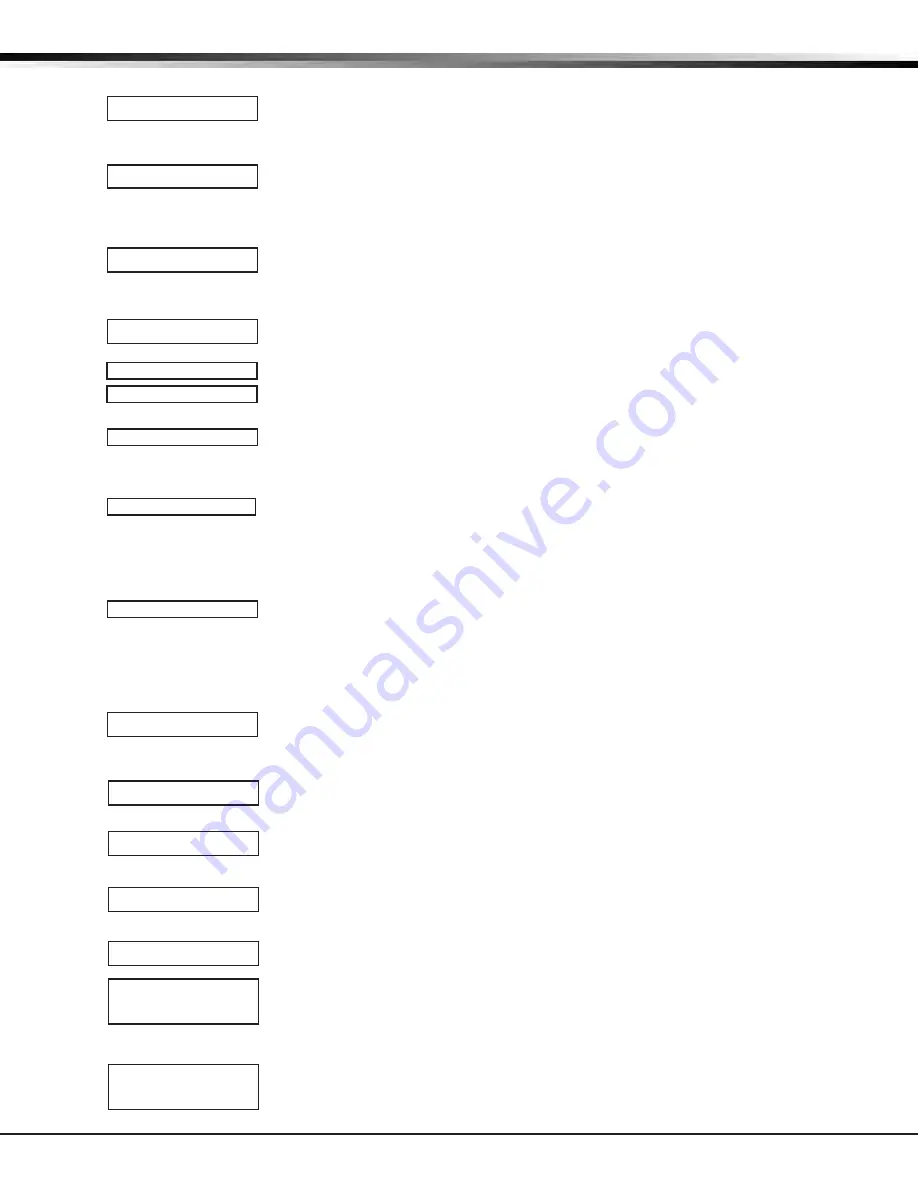
Digital Monitoring Products
CellComSL
Series Universal Communicator Installation and Programming Guide
12
communIcatIon
Communication
7.1
Communication
The Communication section allows you to configure the communication settings for the
CellComSL
Communicator. After choosing the Communication Type, continue through the
list of options.
7.2
Account Number
Enter the account num ber sent to the receiver.
The range of account numbers is 1 to 65535. For account numbers of four digits or less,
you do not have to enter leading zeros. The c
ommunicator automatically right justifies
the account number.
7.3
Transmission Delay
Enter the number of seconds (15 to 45 seconds) the
communicator waits before sending
burglary alarm reports to the receiver. Enter 0 (zero) to disable this function. The
default is 0.
7.4
Communication Type
The c
ommunicator uses CELL communication to DMP Model SCS-1R or SCS-VR Receivers.
7.5
Test Time
Press COMMAND to display the Test Time. Enter the time of day the
communicator sends
the test report to the SCS-1R or SCS-VR Receivers. Use entries between 12:00 to 11:59
and then choose AM or PM.
7.6
Test Days
Enter how often the panel test report is sent to the receiver. Enter from 1 to 60 days.
Enter zero to disable the test report. Default is 1 (one) day. These options only display if
a test time is entered.
7.7
Cell Check In
Check-in reports are a method of supervising the panel for communication with the
receiver.
Enter the number of minutes between check-in reports. Select from 0 or 3-240 minutes.
Enter 0 (zero) to disable the check-in option. Default is 0.
Note:
If Cell Check-in option is used, additional cell charges may apply.
7.8
Fail Time
Fail Time allows the SCS-1R or SCS-VR receiver to miss a defined number of check-ins
before logging that the panel is missing. For example, if
CELL CHECKIN
is 20 and
FAIL
TIME
is 30, the SCS-1R receiver only indicates a Panel Not Responding after 30 minutes.
The
FAIL TIME must be equal to or greater than the CELL CHECKIN minutes: If the
CHECKIN is 20 minutes, the
FAIL TIME
must be 20 or more. The maximum
FAIL TIME is
240 minutes. Select from 0 or 3-240 minutes. The default
FAIL TIME
is 240 minutes.
7.9
Receiver 1 Programming
Allows you to set the options for the first receiver the
communicator attempts to
contact when sending reports. The communicator supports communication to two
receivers.
7.10
Alarm Reports
YES enables Alarm, Alarm Restoral, Exit Error, and System Recently Armed reports to be
sent to this receiver. Default is YES
7.11
Supervisory/Trouble Reports
YES enables Supervisory, Trouble, Trouble Restoral, Force Armed, and Fault reports to be
sent to this receiver. Default is YES.
7.12
Opening/Closing and User Reports
YES enables Opening/Closing, Schedule and Code Changes, and Bypass reports by user to
be sent to this receiver. Default is YES.
7.13
Test Report
Enter YES to enable the Recall Test report to be sent to this receiver.
7.14
First IP Address
Enter the first (primary) IP address where the
communicator sends cell messages. The IP
address must be unique and cannot be duplicated on the network. Enter all 12 digits and
leave out the periods. For example, enter IP address 192.168.0.250 as 192168000250.
The periods display automatically.
7.15
First IP Port
Enter the first IP port number to be used in conjunction with the First IP Address. The IP
port identifies the port used to communicate messages to and from the
communicator.
The default IP Port setting is 2001.
COMMUNICATION
ACCOUNT NO:
XMIT DELAY:
0
COMM TYPE: CELL
CELL TST DAYS:
1
CHECKIN: 0
FAIL TIME:
240
RECEIVER 1 PROG
ALARM NO
YES
SPV/TRBL NO YES
O/C USER NO YES
TEST RPT
NO YES
FIRST IP ADDR
000.000.000.000
FIRST IP PORT
2001
TEST TIME
00:00 AM






























